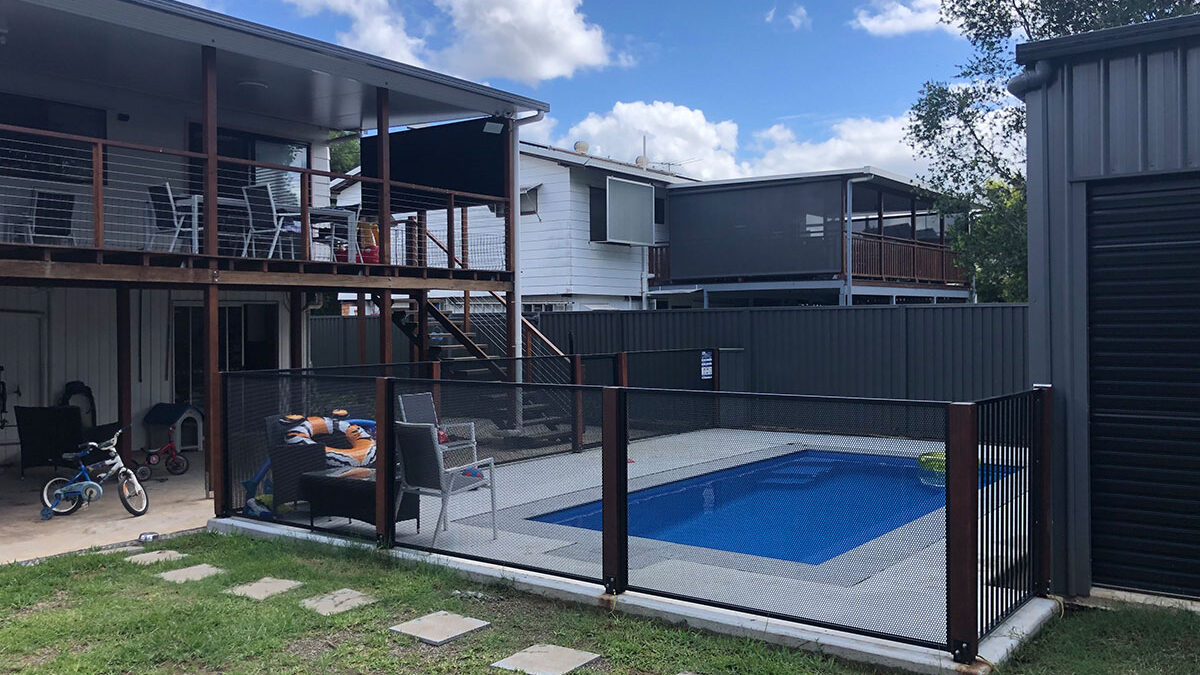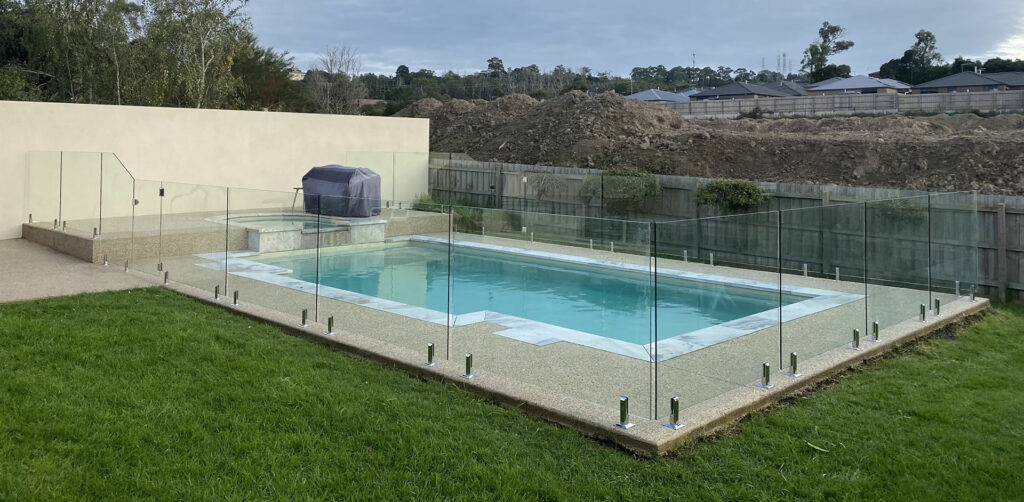Installing aluminium is surprisingly accessible and something anyone can do with the right tools and materials. While most fence post panels will come with instructions on how to assemble and secure that specific model, it’s still important to understand the wider procedures and processes involved with installing an aluminium pool fence.
Read this article to learn the key steps for assembling and installing your own aluminium pool fence.
Requirements Before you Install an Aluminium Pool Fence
Before you begin, here are some things to take into consideration before you install your fence:
Permits
Pool fence installation might fall under construction that requires council approval. Make sure to contact your local council to inquire about any permits or licenses you will need before you begin construction. It may be annoying, but it will save you money in the long run for potential fines.
Height Requirements
In Victoria, all pool fences must be at least 120mm tall above ground to be compliant under law. Make sure that your aluminium pool fence is that height for the entire perimeter of the fence and comply with these standards. You also want to make sure the gap underneath your fence is no higher than 100mm.
Tools & Materials
Before you begin, make sure to source the following tools and materials.
Materials
- Aluminium fence panels
- Aluminium Fence Posts
- Brackets – To connect the fence posts to the panels.
- Concrete – To set the fence posts into the earth.
Tools
- Post-Hole Digger/Auge r- To dig the holes with which you’ll place your fence posts
- Power Drill – Needed to screw in the brackets to secure your fence panels and posts.
- Corrosion-Resistant Screws
- Level – Vital tool to make sure your fence panels are perfectly level with one another
- Stakes and String – Used to mark out the perimeter of the fence
- Whiteboard marker – To mark the length of the fence posts being burried
- Line Marker Paint – To mark digging spots in the grass
- Measuring Tape
- Angle Grinder – Your fence panels likely won’t all perfectly fit your pool perimeter. An angle grinder will cut them to the required length
- Gloves and Goggles – For safety
Aluminium Pool Fence Installation Step-by-Step Guide

Step One: Pre-Installation
Clear the Area: Remove any rocks, vegetation, or tree roots that might get in the way of your work site for your planned fence line.
Mark the Area: Place stakes into the ground to mark the corners of the planned fence perimeter. Then tie the string around each peg to mark the perimeter.
Level the Ground: Make sure the ground around the perimeter is even. You can use a level or a wooden board to make sure the ground is flat. For high spots, simply clear away the dirt or obstructing debris. For low spots, you can create a level base by adding extra soil or gravel.
Step Two: Installing the Posts
Mark the Post Holes: Use a tape measure or an object the length of your fence panels to measure out the space between each of your fence posts. Allow for around 5mm of extra space between each fence post so you have a bit of wiggle room when installing the fence panels. Mark each post hole space with line marker paint. (Don’t forget to mark posts for your gate as well.)
Dig the Holes: Use a post-hole digger or auger to dig holes that are at least 600 mm deep. The diameter of the holes should be three times the diameter of the post.
Mark the Posts: Measure the posts at one third of its height and mark it with a whiteboard marker.
Installing Posts: Fill the holes with concrete mix, then stake the posts into the concrete hole, making sure they’re as deep as the 1/3rd line marked into each pole. Use a level to make sure the post is completely straight. Let the concrete dry and set for 24 hours.
Step Three: Attaching the Panels
Attach Brackets: Attach the metal brackets to one side of each of your fence posts with the power drill and screws.
Attach Panel: Align the fence panel to the bracket you just attached to the fence post, then secure the other side of the fence panel to the opposite post with another metal bracket. Follow the instructions of your specific fence panels to properly secure them.
Cutting Panels to Size: You might have some panels that are too long for the distance of certain posts. Use a tape measure to measure the length you need to cut, and use a whiteboard marker to mark the spot. Put on protective gear and use an angle grinder to cut the extraneous length of fence.
Check Alignment: Confirm that each panel is level during the installation. Adjust screws as needed.
Step Four: Installing the Gate
Install Hinges: Attach the hinges to one side of the gate frame. Position them correctly to allow the gate to swing open and close. Use a level to ensure it’s aligned.
Mount the Gate: Position the gate between two posts. Mark the hinge attachment points, then secure the hinges to the post.
Adjust for Ease of Movement: Test the gate movement, adjust the hinges as needed.
Step Five: Final Inspection
Inspect the Connections: Check that every screw, panel, post, and gate is securely attached. Ensure there are no loose components.
Schedule a Barrier Inspection: As part of your permit to build a pool fence, you’ll need to have your fence inspected by a registered building surveyor or pool inspector. Passing the inspection means you’ll receive a certificate of barrier compliance which you must lodge with your local council.
Still Unsure?
While we’re confident that this article is a fully comprehensive look into how to install pool fencing, the task can feel overwhelming, or you might be facing a roadblock at a particular step. That’s not a problem. Get the support and help you need by calling Precision Glass Fencing. We’re a team of expert pool fence designers, manufacturers, and installers, who are happy to send one of our team members to help you install your fence, or even give you tips on the best design for an aluminium pool fence. Chat with us so we can help you out.



